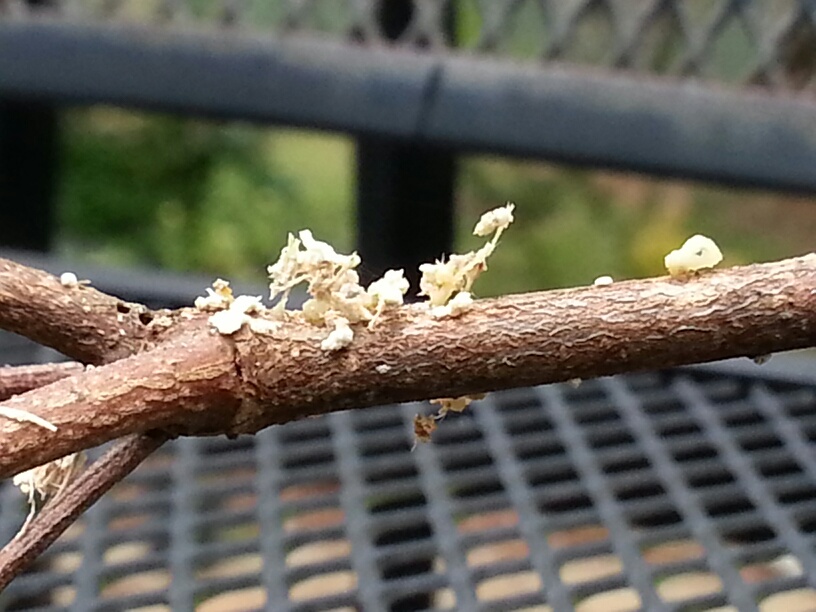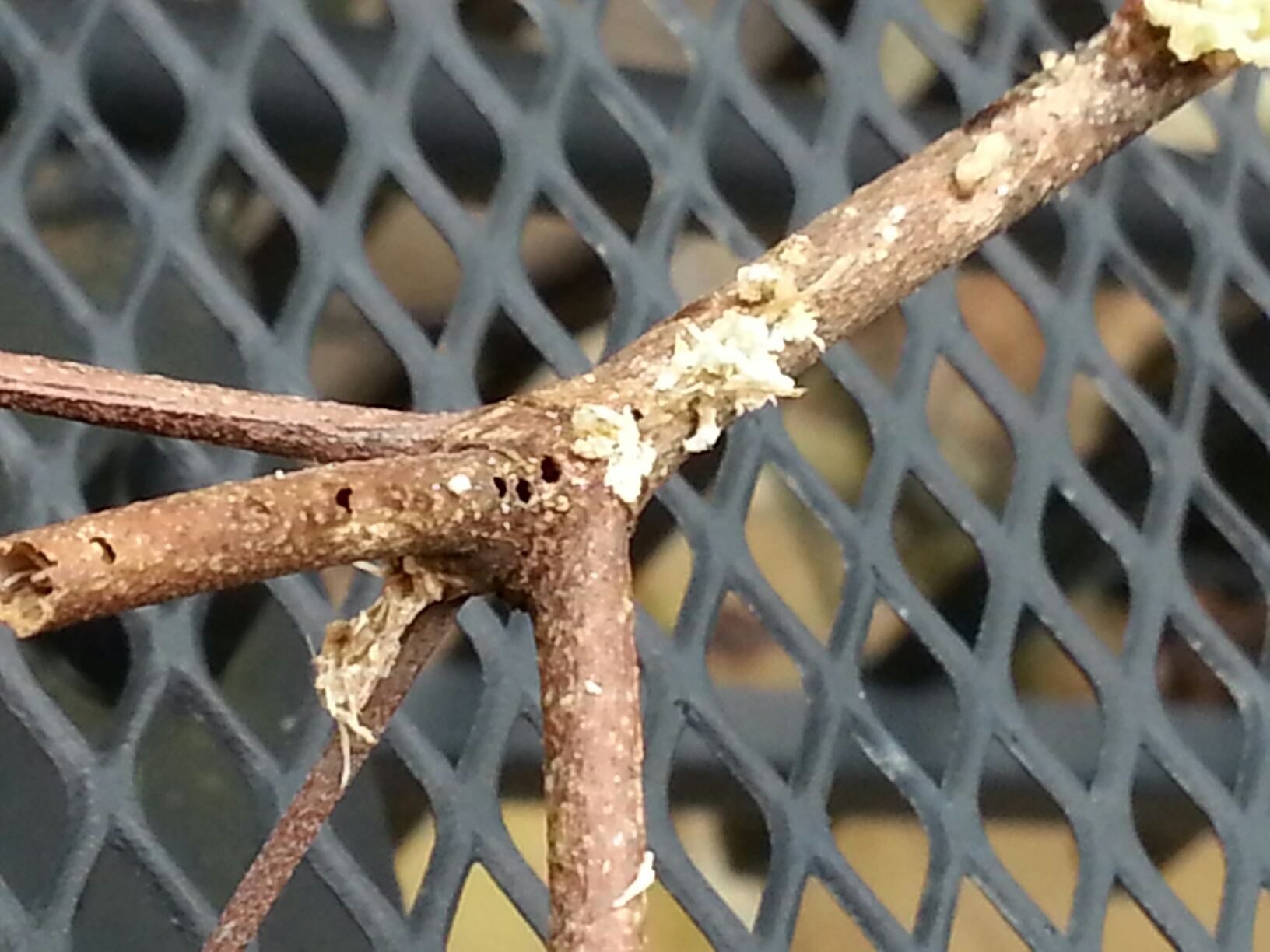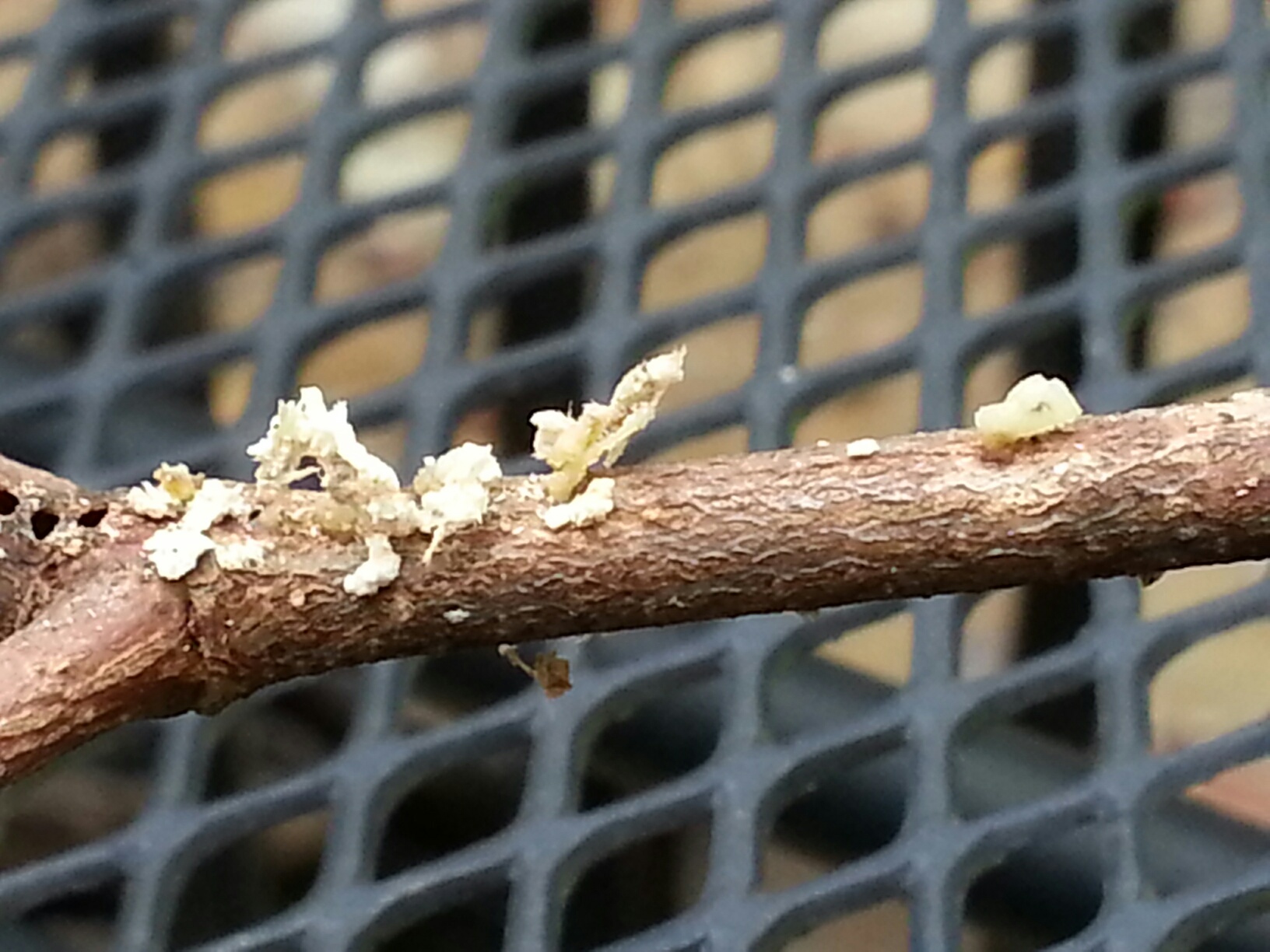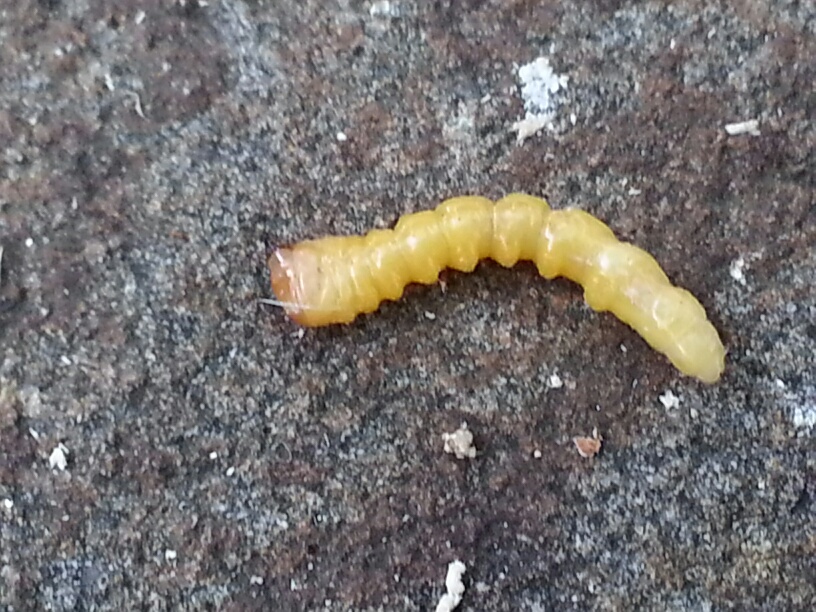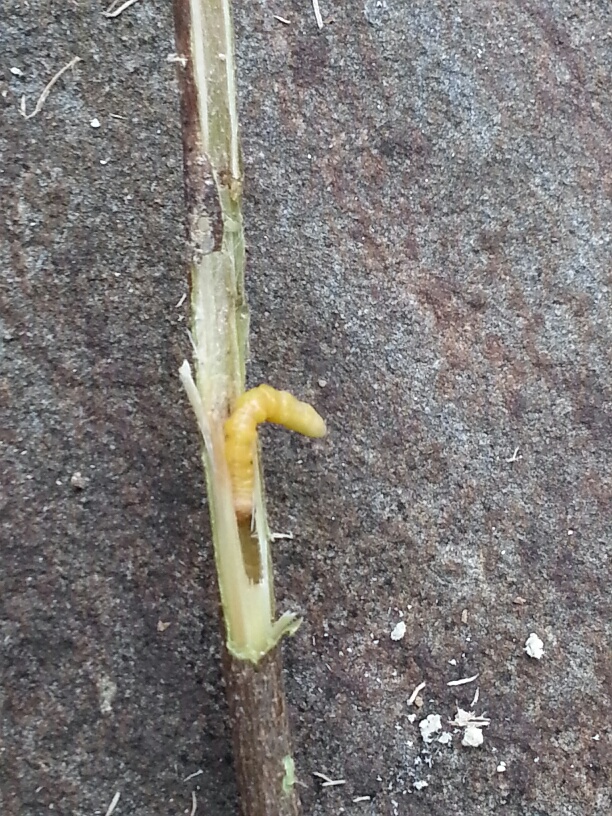Dogwood Twig Borer – Identification

Q: Today I found this stuff on one of my kousa dogwoods. It appears to be isolated to the one branch of one tree. When I split the twig there was a worm inside. Any suggestions on what it is?
A: Congratulations! You are the first person in my entire career to incontrovertibly have dogwood twig borer!
Most dogwood decline is caused by drought or powdery mildew or grass growing beneath the tree….but you definitely have twig borer doing damage to the limb. (and such good pictures!). This insect is not the same as dogwood borer, which attacks tree trunks and causes a scaly, knotty appearance.
A slender female beetle emerges in late May. She flies to new growth and chews a series of holes around the stem and then another series of holes 1/4″ to 1/2″ away. Between these rows of holes she inserts an egg into the bark. Within a few weeks the egg matures and a slender white grub hatches and begins to feed within the stem.
As the grub bores downward, the stem dies and wilts above the area girdled by the female beetle. Sawdust and waste is pushed out of holes along the stem.
The grub overwinters in a cell excavated inside the twig: a hibernaculum (good word to know). The following spring the grub matures into its pupal stage. A few weeks later, a new generation of beetles emerges from infested plants to continue the life cycle.
Damage from twig borers is sporadic so wholesale control is not necessary. In your case, clip off the infested limb(s) below the injury now and spray the trunk and limbs of the tree with any landscape insecticide (click for sources) in spring.


